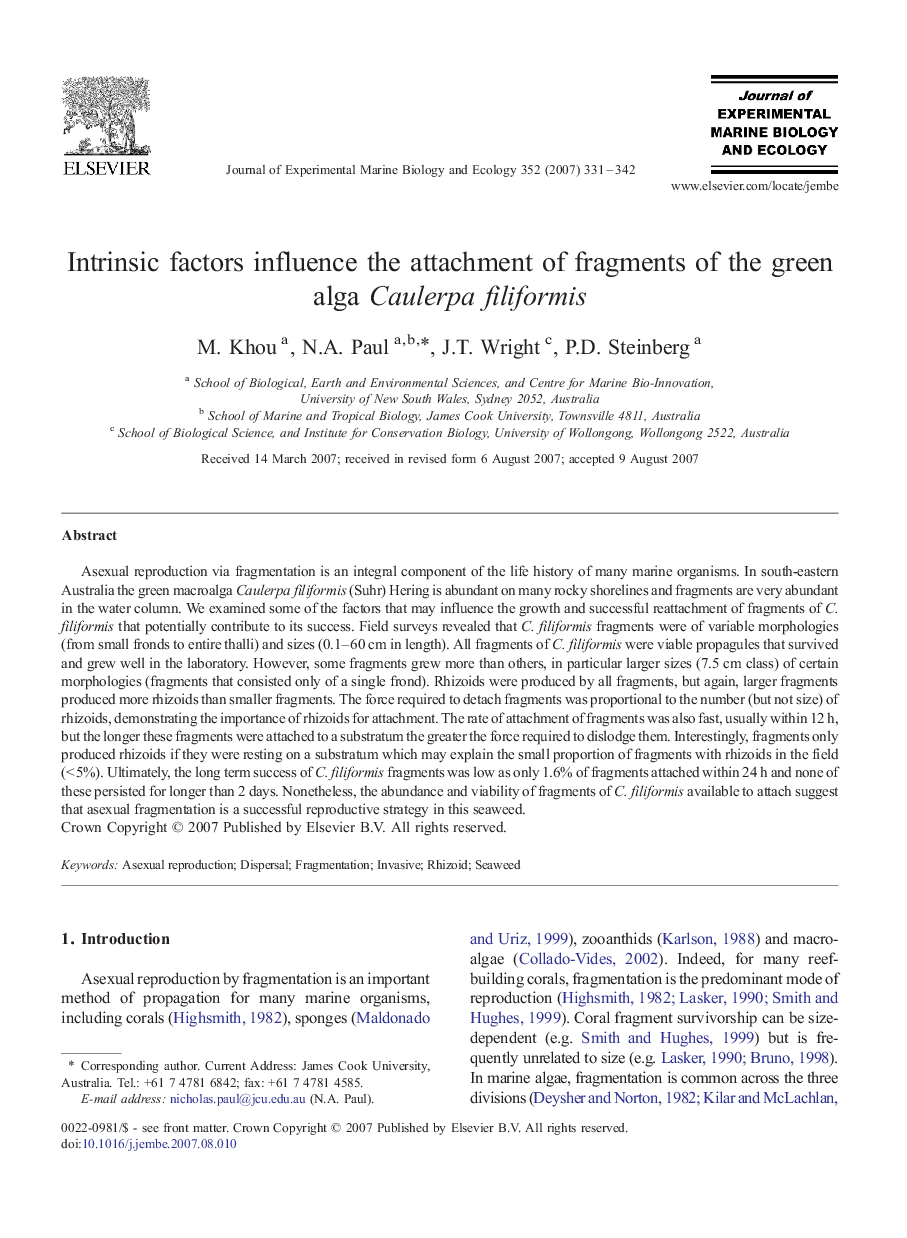| Article ID | Journal | Published Year | Pages | File Type |
|---|---|---|---|---|
| 4397517 | Journal of Experimental Marine Biology and Ecology | 2007 | 12 Pages |
Asexual reproduction via fragmentation is an integral component of the life history of many marine organisms. In south-eastern Australia the green macroalga Caulerpa filiformis (Suhr) Hering is abundant on many rocky shorelines and fragments are very abundant in the water column. We examined some of the factors that may influence the growth and successful reattachment of fragments of C. filiformis that potentially contribute to its success. Field surveys revealed that C. filiformis fragments were of variable morphologies (from small fronds to entire thalli) and sizes (0.1–60 cm in length). All fragments of C. filiformis were viable propagules that survived and grew well in the laboratory. However, some fragments grew more than others, in particular larger sizes (7.5 cm class) of certain morphologies (fragments that consisted only of a single frond). Rhizoids were produced by all fragments, but again, larger fragments produced more rhizoids than smaller fragments. The force required to detach fragments was proportional to the number (but not size) of rhizoids, demonstrating the importance of rhizoids for attachment. The rate of attachment of fragments was also fast, usually within 12 h, but the longer these fragments were attached to a substratum the greater the force required to dislodge them. Interestingly, fragments only produced rhizoids if they were resting on a substratum which may explain the small proportion of fragments with rhizoids in the field (< 5%). Ultimately, the long term success of C. filiformis fragments was low as only 1.6% of fragments attached within 24 h and none of these persisted for longer than 2 days. Nonetheless, the abundance and viability of fragments of C. filiformis available to attach suggest that asexual fragmentation is a successful reproductive strategy in this seaweed.
